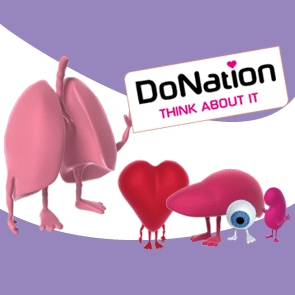The History of Transplants  When did it all start? Although the first reported cornea transplant took place in Moravia as long ago as 1905, the history of transplantation as a clinical treatment only really begins in the second half of the 20th century: 1954 - Dr Joseph Murray carried out the first ever kidney transplant operation on identical 23-year-old twins Richard and Ronald Herrick at the Peter Bent Brigham Hospital in Boston. The operation was a success, with Richard living another eight years and Ronald, the donor, still alive today. 1960 - Sir Michael Woodruff carried out the UK's first kidney transplant, also on twin brothers, in the Royal Infirmary of Edinburgh. The donor started work again just three weeks after the procedure and the patient after 15 weeks. They both lived for six years before dying from a disease unconnected with the transplant. 1963 - Dr Thomas Starzl carried out the world's first liver transplant on a three-year-old boy at the University of Colorado Health Sciences Center in the US. Sadly the child died before the transplantation was concluded, but the knowledge gained about immunosuppression was vital to the first successful transplant, carried out by Starzl four years later. 1965 - The first kidney transplant in the UK from a dead person was carried out in November at the Royal Infirmary of Edinburgh. The patient is still alive today. 1967 - Dr Christiaan Barnard carried out the world's first heart transplant at the Groote Schurr Hospital in Cape Town, South Africa. The patient was Louis Washkansky, a 55-year-old dentist who had diabetes and incurable heart disease. Washkansky could either wait for certain death or risk transplant surgery with an 80 per cent chance of surviving. He chose the surgery. As Barnard later wrote, "For a dying man it's not a difficult decision because he knows he's at the end. If a lion chases you to the bank of a river filled with crocodiles, you'll leap into the water convinced you have a chance to swim to the other side. But you would never accept such odds if there were no lion." On 3 December, Barnard successfully replaced Washkansky's diseased heart with the healthy heart of a young dead woman and it resumed beating when he applied electrodes. Washkansky lived for only 18 days more, dying of double pneumonia as a result of his suppressed immune system. It was a milestone, however, in a new field of life-extending surgery. 1968 - Just one year later Donald Ross and team of 18 doctors and nurses carried out Britain's first heart transplant at the National Heart Hospital in London on patient Fred West who received a new heart from donor Patrick Ryan, who was killed in a building accident. The operation took more than seven hours to complete and went well with Ross commenting recently: "We had a patient, we had got a donor and we did a transplant and it worked surprisingly well, initially anyhow." 1968 - This was also the year that British surgeon/scientist Professor Sir Roy Calne carried out the first liver transplant outside the US. The transplant team was split but after the intervention of Dr Francis Moore, an American transplant surgeon who was visiting, decided to go ahead with the operation. It was a success, although the patient died a few months later. 1973 - Professor Ray Powles CBE carried out Europe's first bone marrow transplant at the Royal Marsden Hospital. The patient, Ian Cuneen, was seven years old when he underwent the operation. When he attended the hospital's celebrations in 2001 to commemorate the 2500th patient to undergo the same procedure, he was married with two children, and working as an engineer. 1983 - Professor Sir Magdi Yacoubi carried out the UK's first heart and lung transplant at Harefield Hospital in London, leading a team of 20 doctors and nurses. The patient was a Swedish journalist, Lars Ljungberg. A combined transplant of this kind is said to be easier than a heart transplant as there are fewer small blood vessels to join and just three main places where the organs are sown into place. Ljunberg died after 13 hours, his wife and mother by his side. His body did not reject the new organs but he succumbed to a previous medical condition. 1986 - the first single lung transplant in the UK was carried out at the Freeman Hospital in Newcastle, with Professor Chris MacGregor acting as the lead surgeon. The operation was a success and the patient survived for 15 years. 1987 - Professor Sir Roy Calne and Professor John Wallwork carried out the world's first liver, heart and lung transplant at Papworth hospital in Cambridge. Professor Calne describes the patient as 'plucky' and she survived for a further ten years after the procedure. Her healthy heart was donated to another transplant patient. 1987 - Professor Sir Magdi Yacoub built on his record by carrying out the UK's first domino heart transplant where the patient receiving the heart and lungs donates their own heart to another patient. 1993 - Europe's first living donor liver transplant was carried out at King's College Hospital in London, where a lobe of the liver, usually of a related adult, is transplanted into a child. About three or four of these operations are carried out every year. The hospital says that the one year graft and patient survival rate is 96 per cent but the programme remains small. The donor's liver regenerates within weeks of the operation. 1995 - Professor Sir Magdi Yacoub went on to perform the first UK live lobe lung transplant at Harefield Hospital in London in which lobes are removed from two healthy people, usually relatives, and transplanted into a person in need of new lungs. It's a highly risky procedure, reduces the fitness of the donors, and is still a very rare operation. But it can save lives.The first patient lived for five years after the operation. 2002 - Professor John Dark carried out the first lung transplant from a non-heart-beating donor at the Freeman Hospital in Newcastle. The lung worked well but the patient died because of other complications. Since then there have been four such operations in the UK. Success rate
Transplants are now so successful in the UK that a year after surgery 94 per cent of kidneys in living donor transplants are still functioning well, 87 per cent of kidneys from people who have died are still functioning well, 84 per cent of liver transplants are still functioning, 82 per cent of heart transplants are still functioning well, 78 per cent of lung transplants are still functioning well - and 64 per cent of heart/lung transplants are still functioning well. These figures are improving all the time. Recent years
The increasing effectiveness of transplantation, an ageing population and an increase in kidney failure means that more people are now able to benefit from a transplant, yet there's a serious shortage of organs and the gap between the number of organs donated and the number of people waiting for a transplant is increasing. Every year hundreds of people die while waiting for a transplant and many others lose their lives before they even get on to the transplant list. The number of available organs has fallen for several reasons. Improvements in road safety, medical advances in the treatment of patients and the prevention of strokes in younger people means that only a very small number of people die in circumstances where they're able to donate their organs.
HISTORY OF TRANSPLANTATION IN NEW ZEALAND
Transplantation began in New Zealand in the 1940's with the commencement of corneal grafting. The first organ to be transplanted was the kidney in the mid 1960's and heart valve transplantation also commenced around that time. Bone was first transplanted in early 80's and heart transplantation began at Green Lane Hospital, Auckland in 1987. The 90's saw the commencement of skin transplantation in 1991, lung transplantation in 1993, and liver and pancreas transplantation in 1998. The Transplant Donor Co-ordination service began in 1987 with the commencement of heart transplantation at Green Lane Hospital. Today this national service is know as Organ Donation New Zealand and facilitates the retrieval of hearts, livers, kidneys, lungs, pancreas', bone, corneas and heart valves.

| 